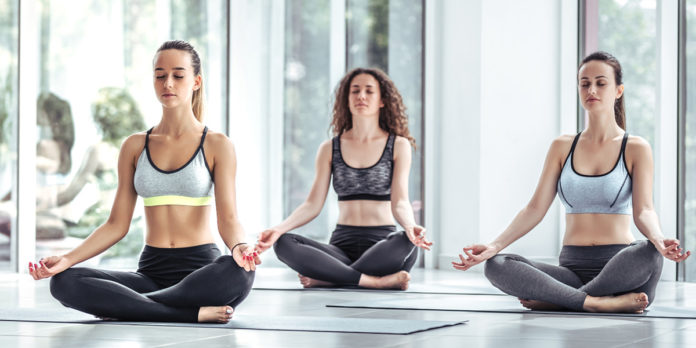
Young people around Australia are currently undergoing school exams, which can be a very stressful time. Nearly half (47%) of Australian students report they feel very tense when they study, and 67% report feeling very anxious even if they are well prepared for a test.
All this stress can have an impact on mental health and well-being, as well as a negative impact on grades and motivation. It’s important to have some strategies to de-stress during this overwhelming time. Mindfulness-based practices have been shown to reduce stress, and make our negative thoughts seem less threatening. Here are some tips from a Victoria University expert.
Meditation
When doing a meditation, it’s useful to make sure you’re in a comfortable environment. Try sitting in a quiet place, perhaps crossed legged, or any position comfortable enough to remain still for a few minutes. A meditation session can be a long or short as you like.
Some people like to meditate with their eyes closed, but this isn’t a requirement. If you want to keep your eyes open, try to maintain a relaxed gaze, and avoid moving your gaze around for the duration of the meditation.
There are a number of free apps that can be used to guide you through a meditation, including those made by Reachout, Smiling Mind or Headspace.
Using the breath
Paying attention to the breath is a widely used and effective meditation method. This can be as simple as noticing the breath entering and exiting the body. It can be helpful to feel the belly rise and fall with the breath or to pay attention to the sensation of the breath entering and exiting the nostrils.
It’s normal for your attention to wander. Every time you notice this happening, gently bring your attention back to the breath. Try to make your breath slow and steady. You might like to breathe out of the mouth for the first few breaths, and then continue by breathing both in and out of the nose. If you want to add to this, you might try counting your breaths. See how many you can reach before your mind wanders and you lose track, and then simply bring your attention back and start again.
Don’t be hard on yourself if your attention wanders. Noticing your attention wander and bringing it back is part of meditation.
Another option is to count the length of your breaths. Exhaling longer than you inhale can help you relax.
Four-seven-eight
This is a breathing technique that can help you to centre yourself and calm down when you feel stressed. It helps by focusing attention on the breath and also tricks the body into feeling more relaxed by reducing an accelerated heart rate. You can use this anytime, anywhere.
Exhale deeply through your mouth, take a deep breath through your nose for four counts, hold the breath for seven counts, exhale through your mouth for eight counts, repeat four to eight times.
Using mantras
Using a mantra, which is a phrase repeated over and over, can be helpful to quiet the chatter of the mind. You might try repeating a phrase such as “I am here,” “I am safe,” or “I can do this”. The phrase can be as long or short as you like and can be repeated aloud or in your head.
It can be very useful to pair the repetition of the phrase with the breath. For example, you could say “I am” on your in breath, and “here” on your ‘out’ breath.
Mindfulness
Paying attention to the senses can be a helpful way to become present, centre yourself and engage with your environment. You can practise throughout the day by noticing what you see, smell, hear or feel – especially when you find yourself getting caught up in your thoughts and feelings.
Going to a yoga class can be a great way to explore mindfulness of the body in a supported environment. Studies from the US and India show mindfulness-based yoga programs in secondary schools can improve grades or mitigate decreases in grades across the school year, improve emotional regulation, improve memory, anger control, fatigue and mood, and decrease anxiety.
Another option is to try to some gentle mindful stretching on your own or with a friend. You can try any stretches you like, while paying attention to what is happening in your body as a result of the stretch.
Pay attention to how the muscles feel, both during and in the few seconds after the stretch. Be aware of how the stretch might affect your breathing. Try to maintain a steady, calm, breath throughout the practice. If your mind wanders, just bring it back to the sensations in your body.
You can practise these measures at home around exam time, while you’re lining up to enter your exam, or even in the middle of your exam if you’re starting to feel overwhelmed. Taking a moment to slow your heart rate and calm your thoughts will pay off in the long run.
(Source: Victoria University)









